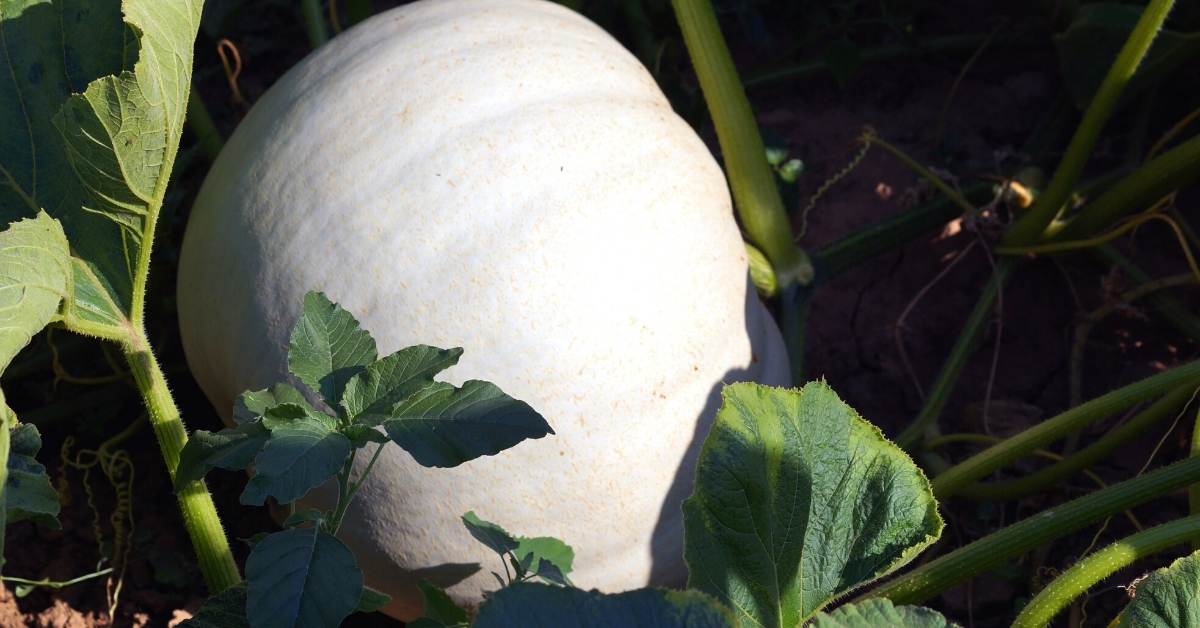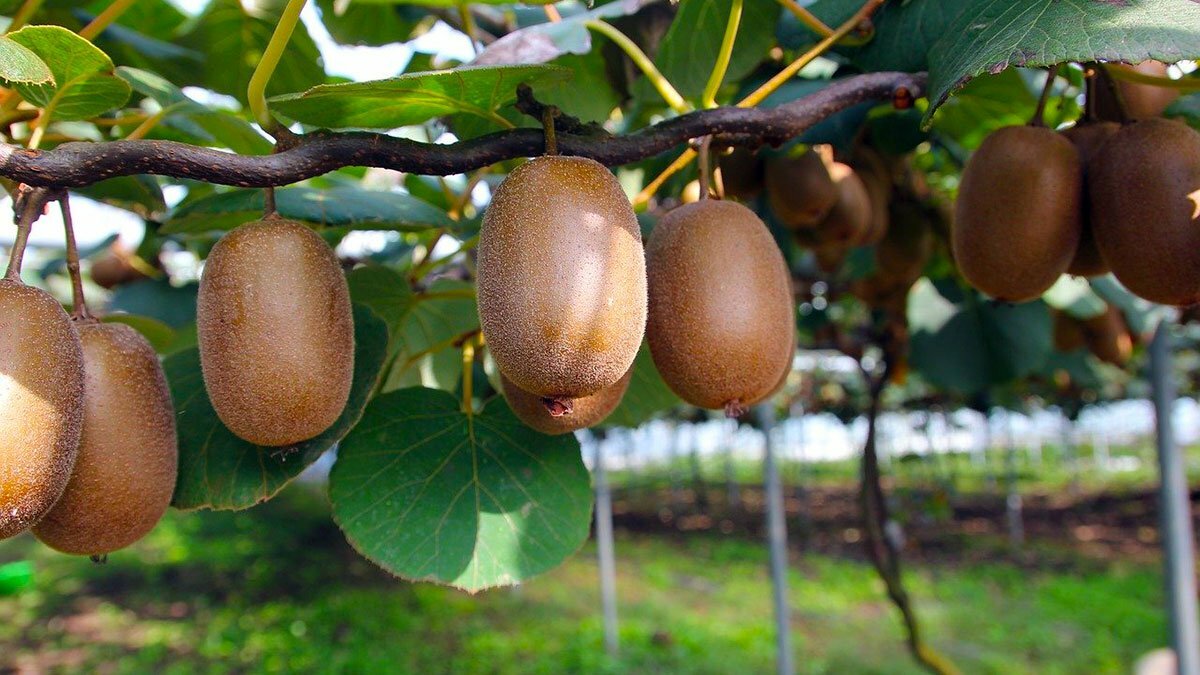Bonsai is an ancient art form that involves growing and shaping miniature trees in containers. It is a fascinating hobby that combines creativity, patience, and skill. Bonsai trees are not only beautiful to look at but also have many benefits for your well-being. They can reduce stress, purify the air, and bring a sense of harmony and peace to your home or office.
But how do you pick a bonsai tree that suits your style and climate? With so many varieties and styles of bonsai trees available, choosing one that matches your personality and preferences can be overwhelming. You also need to consider the environmental factors that affect the health and growth of your bonsai tree, such as light, temperature, humidity, and watering.
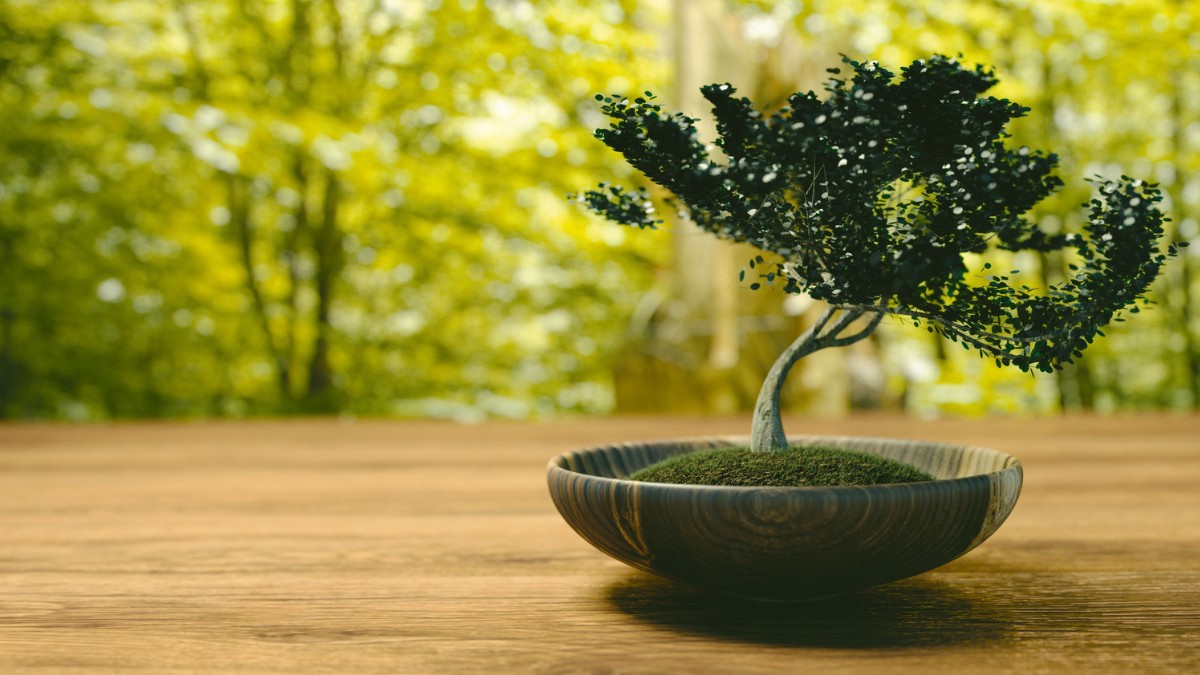
In this article, we will guide you through the process of choosing a bonsai tree that suits your style and climate. We will explain the different bonsai styles, such as formal upright, informal upright, slanting, cascade, and more. We will also show you how to select a tree species and shape that fits your desired style. Then, we will help you decide whether you need an indoor or outdoor bonsai tree and how to care for it according to its light, temperature, humidity, and watering needs. Finally, we will give you some tips on how to find and buy a healthy and quality bonsai tree from various sources.
By the end of this article, you will have a clear idea of how to pick a bonsai tree that suits your style and climate. You will also be inspired and motivated to start or continue your bonsai journey. So let’s get started!
How to Choose a Bonsai Tree Based on Your Style Preferences
One of the most important factors to consider when choosing a bonsai tree is your personal style preference. Bonsai trees come in a variety of shapes and forms that reflect different aspects of nature and art. By choosing a bonsai style that suits your taste and personality, you will enjoy your bonsai more and express yourself better.
But what are the different bonsai styles, and how do you choose one? In this section, we will explain the main bonsai styles that have been developed over the centuries by bonsai masters and enthusiasts. We will also provide examples and pictures of each style and give you tips on how to select a tree species and shape that fits your desired style.
Traditional Bonsai Styles
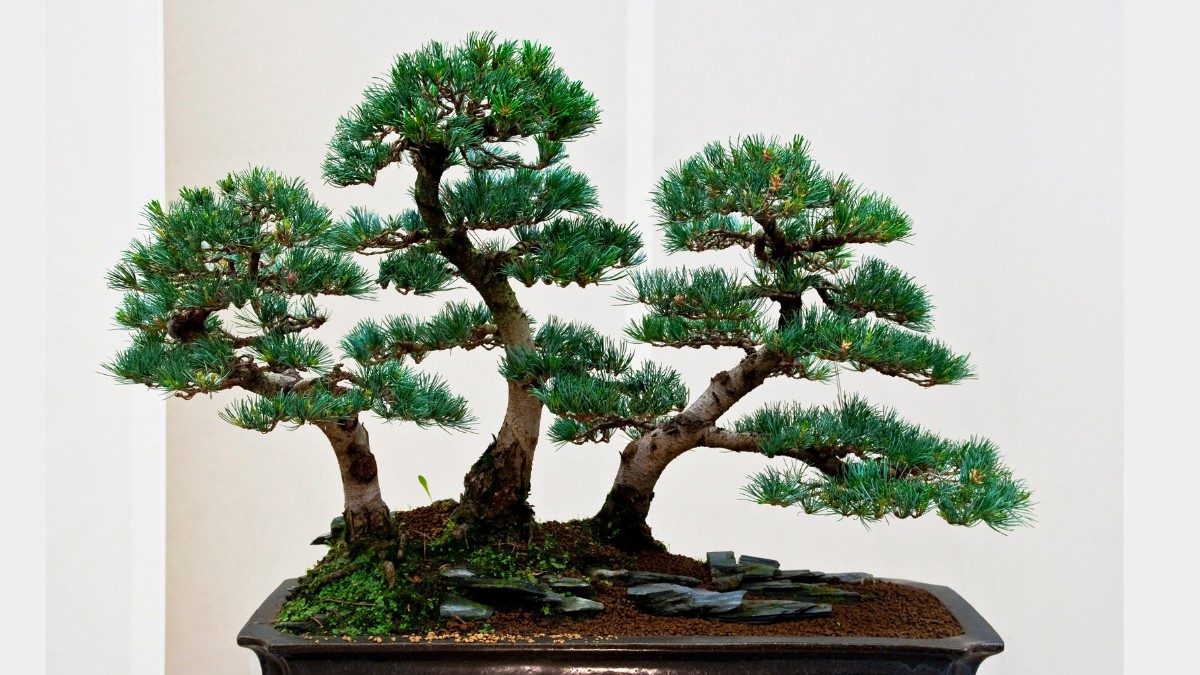
The traditional bonsai styles are based on the orientation of the main trunk of the bonsai tree. They are also influenced by the natural shapes of trees in different environments, such as mountains, forests, cliffs, etc. The traditional bonsai styles are:
Formal upright (Chokkan):
This style is characterized by a straight and vertical trunk that tapers from the base to the top. The branches are symmetrical and evenly spaced along the trunk. The apex of the tree is directly above the center of the trunk. This style represents a mature and majestic tree that grows in an open space with plenty of sunlight. It is suitable for coniferous trees, such as pine, spruce, juniper, etc.
Informal upright (Moyogi):
This style is similar to the formal upright, but the trunk is slightly curved or twisted in an S-shape. The branches are also symmetrical and evenly spaced, but they grow opposite to the direction of the trunk curves. The apex of the tree is still above the center of the trunk. This style represents a young and graceful tree that grows in a natural environment with some obstacles or challenges. It is suitable for both coniferous and deciduous trees, such as maple, elm, cherry, etc.
Slanting (Shakan):
This style is characterized by a trunk that grows at an angle of about 60 to 80 degrees relative to the ground. The roots are well-developed on one side to support the tree, while they are less developed on the other side. The branches grow opposite to the direction of the trunk to create a sense of balance. The apex of the tree can be above or below the center of the trunk. This style represents a tree that grows in a windy or shady environment and leans toward the sun or away from the wind. It is suitable for both coniferous and deciduous trees, such as juniper, pine, maple, birch, etc.
Cascade (Kengai):
This style is characterized by a trunk that grows downward below the rim of the pot. The trunk can be straight or curved in an S-shape. The branches alternate left and right along the trunk and form a cascading effect. The apex of the tree can be below or above the base of the pot. This style represents a tree that grows on a steep cliff or overhang and bends downward due to gravity or external factors, such as snow or rocks. It is suitable for coniferous trees, such as juniper, pine, spruce, etc.
Semi-cascade (Han-Kengai):
This style is similar to the cascade, but the trunk does not grow below the base of the pot. The trunk can be straight or curved in an S-shape. The branches alternate left and right along the trunk and form a semi-cascading effect. The apex of the tree can be below or above the rim of the pot. This style represents a tree that grows on a slope or near a water source and bends downward due to gravity or external factors, such as wind or water. It is suitable for both coniferous and deciduous trees, such as juniper, pine, maple, willow, etc.
Newer Bonsai Styles
The newer bonsai styles are based on more creative and artistic interpretations of nature and bonsai aesthetics. They are not limited by strict rules or conventions and allow more freedom and expression for bonsai artists. Some of the newer bonsai styles are:
Windswept (Fukinagashi):
This style is characterized by a trunk and branches that lean in one direction as if blown by a strong wind. The foliage is sparse and concentrated on the leeward side of the tree. This style evokes a sense of movement and drama.
Literati (Bunjin):
This style is characterized by a tall and slender trunk that has few or no branches until the top. The foliage is minimal and often asymmetrical. This style reflects the aesthetic of Chinese literati painters and poets who valued simplicity and elegance.
Forest (Yose-ue):
This style is characterized by a group of trees of the same or different species that are planted in a single pot. The trees are arranged to create a realistic scene of a natural forest. The number, size, shape, and position of the trees are carefully considered to create harmony and balance.
Root-over-rock (Seki-juju):
This style is characterized by a tree that grows over a rock with its roots exposed and clinging to the rock. The rock acts as a support and a contrast for the tree. The tree and the rock should complement each other in shape, color, and texture.
Broom (Hokidachi):
This style is characterized by a straight and upright trunk that branches out evenly in all directions. The foliage forms a round and symmetrical canopy that resembles a broom. This style is suitable for deciduous trees with fine branches and leaves.
Weeping (Shidare-zukuri):
This style is characterized by a trunk and branches that bend downward and hang loosely. The foliage forms a cascading curtain that covers the trunk and the pot. This style is suitable for trees with flexible branches and drooping leaves or flowers.
How to Pick a Bonsai Tree?
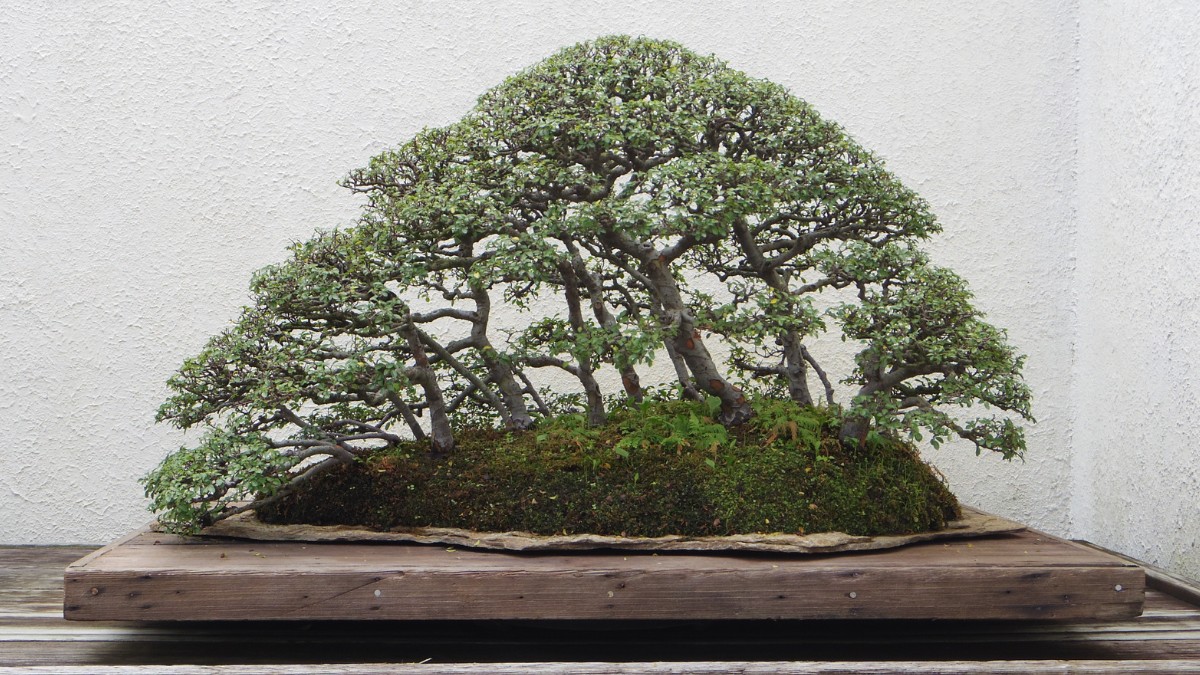
One of the most important factors to consider when choosing a bonsai tree is your personal style preference. Bonsai trees come in a variety of shapes and forms that reflect different aspects of nature and art. By choosing a bonsai style that suits your taste and personality, you can create a unique and expressive miniature tree that you will enjoy for years to come.
But what are the different bonsai styles, and how do you choose one? In this section, we will explain the basic bonsai styles that are commonly used to classify and train bonsai trees. We will also show you how to select a tree species and shape that fits your desired style.
Bonsai Styles: An Overview
Bonsai styles are based on the orientation of the main trunk and the arrangement of the branches and foliage. They are influenced by the natural growth habits of trees in different environments, such as mountains, forests, cliffs, or swamps. They also reflect the artistic vision and creativity of the bonsai artist.
There are many ways to categorize bonsai styles, but here we will use a simple and widely accepted classification that consists of five basic styles and several variations. These are:
Formal upright (Chokkan):
This style represents a tree that grows straight and tall in an open space with plenty of sunlight. The trunk is vertical and tapering, with symmetrical branches that decrease in size and length towards the top. The apex (the highest point of the tree) is formed by a single branch that continues the line of the trunk. This style is suitable for coniferous trees such as pine, spruce, or juniper.
Informal upright (Moyogi):
This style represents a tree that grows with some curves and bends due to wind or other factors. The trunk is still upright but not vertical, forming an S-shape or a gentle curve. The branches are arranged alternately on each curve of the trunk, creating a sense of balance and movement. The apex is also formed by a single branch that follows the direction of the trunk. This style is suitable for both coniferous and deciduous trees such as maple, elm, or cherry.
Slanting (Shakan):
This style represents a tree that leans to one side due to strong wind or gravity. The trunk is angled at about 60 to 80 degrees from the ground, with well-developed roots on the opposite side to support the tree. The first branch grows on the opposite side of the lean, creating a counterweight effect. The trunk can be slightly bent or completely straight but still tapering. The apex can be formed by a single branch or by several branches that extend horizontally. This style is suitable for both coniferous and deciduous trees such as pine, maple, or birch.
Cascade (Kengai):
This style represents a tree that grows over a cliff or waterfall, with its branches hanging down below the level of the pot. The trunk grows upright for a short distance and then bends sharply downward, forming an inverted U-shape or an S-shape. The branches grow on both sides of the trunk, with some pointing upward and some pointing downward. The apex is formed by a branch that extends below the pot rim. This style is suitable for coniferous trees such as juniper or pine or for flowering trees such as wisteria or azalea.
Semi-cascade (Han-kengai):
This style represents a tree that grows on a steep slope or near a stream, with its branches extending over the edge of the pot but not below it. The trunk grows upright for a longer distance than in cascade style and then bends slightly downward, forming an L-shape or a gentle curve. The branches grow on both sides of the trunk, with some pointing upward and some pointing downward. The apex is formed by a branch that extends over the pot rim but not below it. This style is suitable for both coniferous and deciduous trees such as juniper, maple, or willow.
These are the basic bonsai styles, but there are also many variations and sub-styles that can be created by combining different elements of these styles or by adding some special features such as multiple trunks, exposed roots, or deadwood. Some examples of these variations are:
Broom (Hokidachi):
This style represents a deciduous tree with a straight and upright trunk that branches out in all directions at about one-third of the height of the tree. The branches and leaves form a ball-shaped crown that resembles a broom. This style is suitable for deciduous trees with fine branching, such as elm, zelkova, or hornbeam.
Literati (Bunjingi):
This style represents a tree that grows in a harsh environment with limited resources, such as a rocky mountain or a desert. The trunk is thin and long, with few or no branches until the top of the tree. The branches and foliage are sparse and asymmetrical, creating a contrast between emptiness and fullness. This style is suitable for coniferous trees such as pine, juniper, or spruce.
Windswept (Fukinagashi):
This style represents a tree that is constantly exposed to strong wind from one direction, such as on a seashore or a plain. The trunk is slanted or curved, with all the branches growing on one side of the tree. The branches and foliage are also slanted or curved, creating a sense of movement and dynamism. This style is suitable for both coniferous and deciduous trees such as pine, maple, or olive.
Driftwood (Sharimiki):
This style represents a tree that has survived natural disasters such as fire, lightning, or drought, resulting in some parts of the trunk or branches being dead and bleached. The deadwood contrasts with the living parts of the tree, creating a dramatic effect of life and death. This style is suitable for coniferous trees such as juniper, pine, or cedar.
These are just some examples of the many bonsai styles and variations that exist. You can learn more about them by reading books, watching videos, or visiting bonsai exhibitions. You can also create your own style by experimenting with different shapes and forms.
How to Select a Tree Species and Shape That Fits Your Desired Style
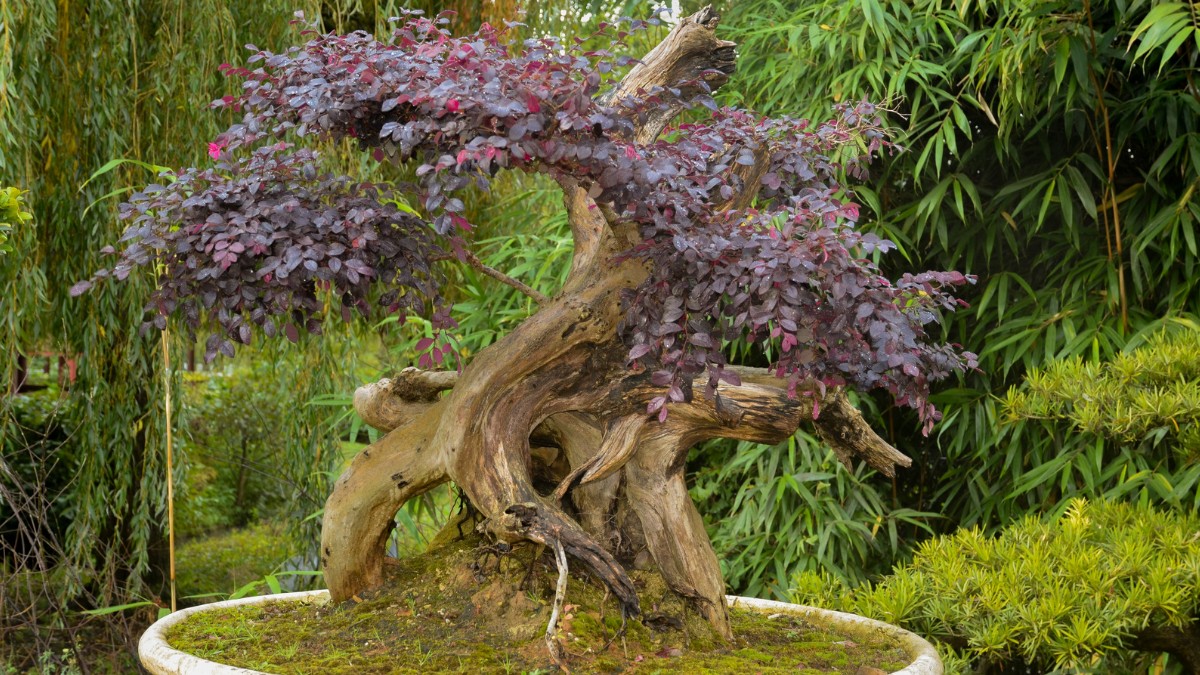
Once you have an idea of what bonsai style you like, you need to select a tree species and shape that fits your desired style. There are hundreds of tree species that can be used for bonsai, but not all of them are suitable for every style. Some factors to consider when choosing a tree species are:
The size and shape of the leaves:
Smaller and finer leaves are better for creating a realistic scale and proportion for your bonsai. Larger and coarser leaves can make your bonsai look out of balance and unnatural. Some tree species have leaves that change color or fall off in different seasons, adding interest and variety to your bonsai.
The texture and color of the bark:
The bark is an important feature of your bonsai, especially for styles that expose the trunk or branches. The bark can have different textures and colors, such as smooth or rough, gray or brown, flaky or peeling. Some tree species have bark that changes color or texture as they age, adding character and beauty to your bonsai.
The growth habit and rate:
Different tree species have different growth habits and rates, which affect how easy or difficult they are to train and maintain as bonsai. Some tree species grow fast and vigorously, requiring frequent pruning and wiring to shape them. Others grow slow and compact, requiring less intervention but also less flexibility to change their shape. Some tree species grow upright and straight, while others grow slanted or curved.
To select a tree species that fits your desired style, you can do some research online or consult with an expert at a bonsai nursery or club. You can also look at examples of bonsai trees in books, magazines, or exhibitions to get some inspiration.
Once you have selected a tree species, you need to select a specific tree shape that fits your desired style. There are two main ways to do this:
Buy a pre-bonsai or nursery stock:
A pre-bonsai or nursery stock is a young tree that has been grown in a pot but has not been trained as bonsai yet. It usually has a basic shape that can be further refined and improved by pruning and wiring. You can buy pre-bonsai or nursery stock from online stores, local nurseries, or bonsai clubs. When buying pre-bonsai or nursery stock, you should look for healthy trees with good roots, trunks, branches, and foliage. You should also look for trees that have some potential to be trained into your desired style.
Collect a tree from nature:
Collecting a tree from nature is another way to obtain a specific tree shape that fits your desired style. It involves finding and digging up a wild tree from its natural habitat, such as a forest, a mountain, or a field. You need to have permission from the landowner before collecting any trees from nature.
You also need to have some knowledge and experience on how to collect trees safely and successfully without harming them or their environment. When collecting trees from nature, you should look for trees that have some interesting features or characteristics that suit your desired style, such as curves, bends, twists, deadwood, or scars. You should also look for trees that are suitable for your climate and can survive in a pot.
These are the two main ways to select a tree shape that fits your desired style. You can also create your own tree shape by growing a tree from seed or cutting, but this is a very slow and challenging process that requires a lot of patience and skill.
In summary, choosing a bonsai tree based on your style preferences involves selecting a bonsai style that suits your taste and personality, selecting a tree species that suits your desired style, and selecting a tree shape that suits your desired style. By doing so, you can create a bonsai tree that reflects your unique vision and expression. In the next section, we will discuss how to choose a bonsai tree based on your climate conditions. Stay tuned!
How to Choose a Bonsai Tree Based on Your Climate Conditions
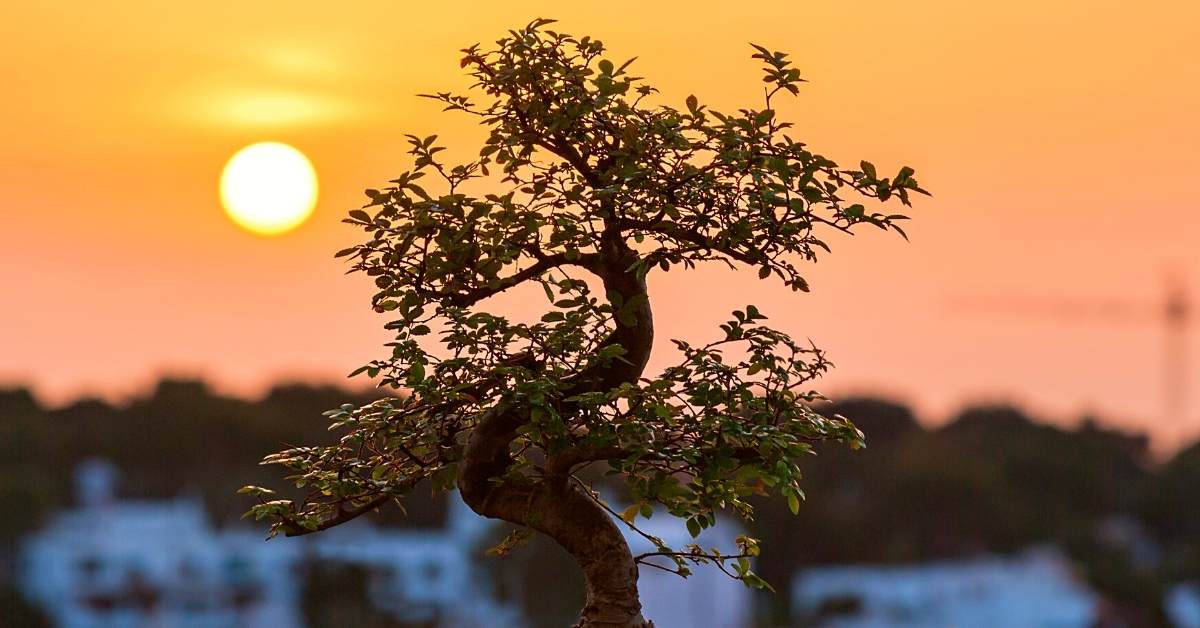
Another important factor to consider when choosing a bonsai tree is your climate conditions. Bonsai trees are living organisms that need the right environment to grow and thrive. Depending on where you live and what kind of weather you have, you may need to choose between indoor and outdoor bonsai trees.
Indoor and outdoor bonsai trees are not different species but rather different categories based on their origin and adaptation. Indoor bonsai trees are typically tropical or subtropical plants that come from warm and humid regions, such as Africa, Asia, or South America. Outdoor bonsai trees are usually temperate plants that come from cooler and drier regions, such as Europe, North America, or Japan.
In this section, we will explain the difference between indoor and outdoor bonsai trees and how to determine which one is suitable for your area. We will also provide some examples and pictures of indoor and outdoor bonsai trees. Finally, we will give you some tips on how to care for your bonsai tree according to its light, temperature, humidity, and watering needs.
Indoor vs Outdoor Bonsai Trees: What’s the Difference?
The main difference between indoor and outdoor bonsai trees is their tolerance to cold and frost. Indoor bonsai trees cannot survive in low temperatures and must be kept indoors where the temperature is stable and above 15°C (59°F). Outdoor bonsai trees can survive in low temperatures and must be kept outdoors where they can experience the natural seasons and dormancy.
Indoor bonsai trees are ideal for people who live in areas with mild or warm climates throughout the year, such as Florida, California, or Hawaii. They are also ideal for people who live in apartments or have limited outdoor space. Indoor bonsai trees can be placed in any room of the house as long as they receive enough light and ventilation.
Outdoor bonsai trees are ideal for people who live in areas with cold or temperate climates that have four distinct seasons, such as New York, Chicago, or London. They are also ideal for people who have a garden or a balcony where they can place their bonsai trees. Outdoor bonsai trees can be placed in full sun or partial shade, depending on the species.
How to Determine Whether You Need an Indoor or Outdoor Bonsai Tree
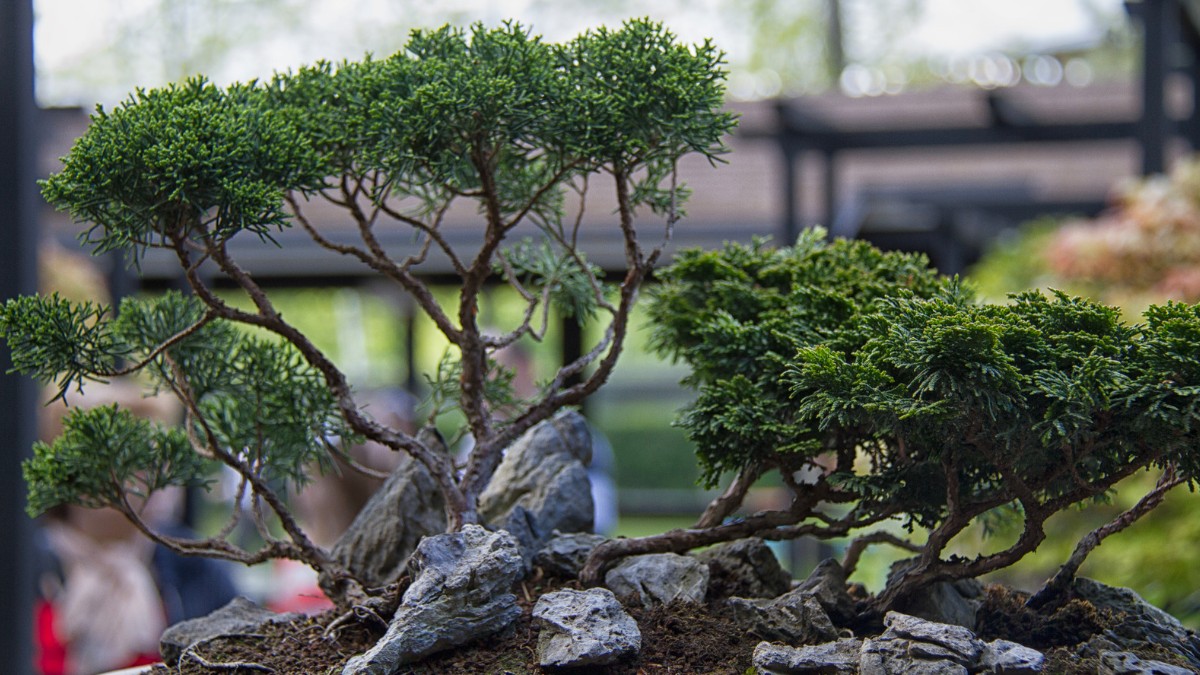
To determine whether you need an indoor or outdoor bonsai tree, you need to consider two factors: your location and your tree species.
Your location:
The first factor to consider is your location and the climate conditions of your area. You need to know the average temperature, humidity, rainfall, and sunlight of your area throughout the year. You can use online tools such as weather.com or worldclimate.com to find this information.
Based on your location, you can decide whether you need an indoor or outdoor bonsai tree. If you live in a warm or tropical area where the temperature rarely drops below 15°C (59°F), you can choose an indoor bonsai tree. If you live in a cold or temperate area where the temperature often drops below 15°C (59°F), especially during winter, you need an outdoor bonsai tree.
Your tree species:
The second factor to consider is your tree species and its origin and adaptation. You need to know where your tree species come from and what kind of climate it is used to. You can use online tools such as wikipedia.org or plantcaretoday.com to find this information.
Based on your tree species, you can decide whether you need an indoor or outdoor bonsai tree. If your tree species comes from a tropical or subtropical region where it grows in warm and humid conditions, you need an indoor bonsai tree. If your tree species comes from a temperate region where it grows in cool and dry conditions, you need an outdoor bonsai tree.
Examples of Indoor and Outdoor Bonsai Trees
To give you some ideas of what kind of bonsai trees you can choose based on your climate conditions, here are some examples of indoor and outdoor bonsai trees:
Indoor bonsai trees:
Some common indoor bonsai trees are ficus, jade, schefflera, bougainvillea, hibiscus, serissa, dwarf umbrella tree, Chinese elm, sago palm, money tree, etc.
Outdoor bonsai trees:
Some common outdoor bonsai trees are juniper, pine, maple, elm, azalea, wisteria, cherry, olive, apple, etc.
These are just some examples of the many bonsai trees that you can choose based on your climate conditions. You can find more examples and pictures online or at your local bonsai nursery or club.
5 Things to Consider When Picking a Bonsai Tree
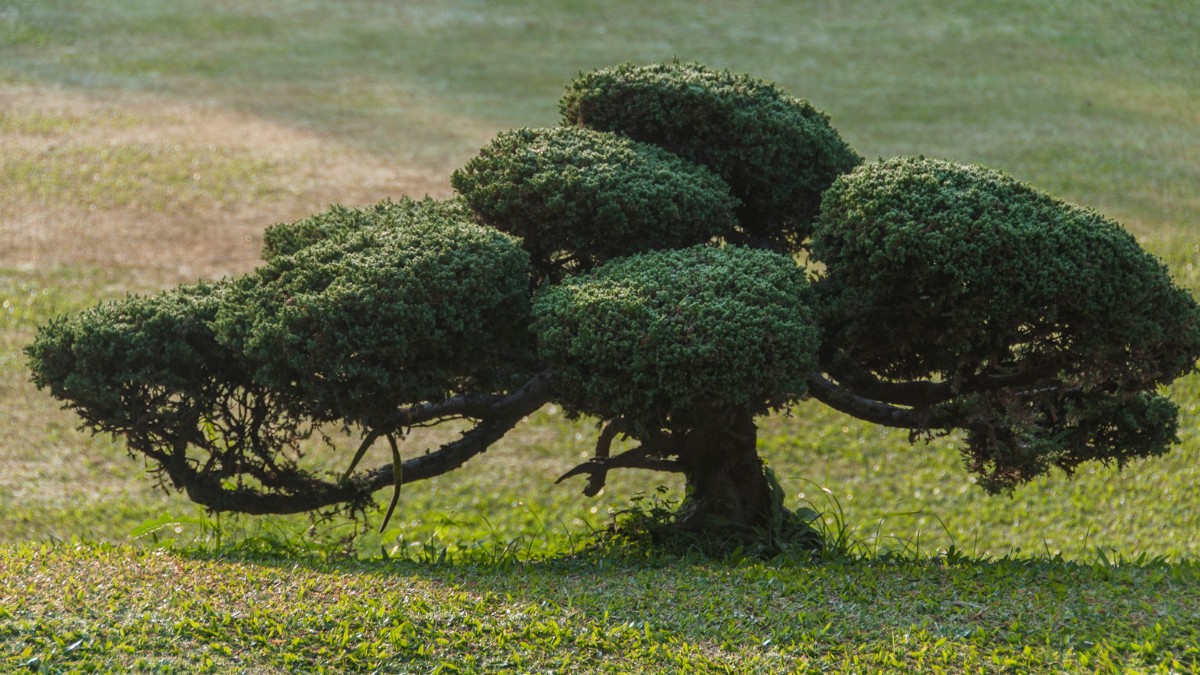
Bonsai trees are miniature living sculptures that can bring beauty and joy to any space. However, choosing a bonsai tree can be a daunting task for beginners and enthusiasts alike. There are many factors to consider when picking a bonsai tree that suits your style and climate.
In this section, we will discuss 5 things to consider when choosing a bonsai tree. These are:
- Your lifestyle
- Your space
- Your personality
- Your budget
- Your experience level
By considering these 5 things, you can narrow down your options and find the perfect bonsai tree for you.
Your Lifestyle
The first thing to consider when choosing a bonsai tree is your lifestyle. How much time do you have to devote to caring for a bonsai tree? Are you willing to invest in the proper tools and supplies?
Bonsai trees are not low-maintenance plants. They require regular watering, fertilizing, pruning, wiring, repotting, and pest control. Some species may also need special lighting, temperature, or humidity conditions. If you neglect or mistreat your bonsai tree, it may die or lose its shape and beauty.
Therefore, before you buy a bonsai tree, you should ask yourself if you have the time and interest to care for it properly. You should also research the specific needs of your chosen species and make sure you can provide them. If you are busy or travel frequently, you may want to choose a more forgiving species or ask someone to look after your bonsai tree while you are away.
Your Space
The second thing to consider when choosing a bonsai tree is your space. How much space do you have for a bonsai tree? Some bonsai trees can grow quite large, so it’s important to choose one that will fit in your home or office.
As I mentioned above, bonsai trees come in different sizes and shapes. Some can be as small as a few inches, while others can be several feet tall and wide. You should measure the space where you want to place your bonsai tree and choose one that will not outgrow it. You should also leave some room around your bonsai tree for air circulation and aesthetic purposes.
Another aspect of space is whether you want to keep your bonsai tree indoors or outdoors. Most bonsai trees are outdoor plants that need natural sunlight and seasonal changes. However, some species can be adapted to indoor environments with artificial lights and controlled temperatures. You should choose a bonsai tree that matches your climate and location preferences.
Your Personality
The third thing to consider when choosing a bonsai tree is your personality. What kind of style do you like? Are you looking for a traditional Japanese bonsai tree or something more modern?
Bonsai trees are not only plants but also works of art. They can express different moods and emotions depending on their shape and style. There are many different styles of bonsai trees, such as formal upright, informal upright, slanting, cascade, semi-cascade, etc. Each style has its own rules and guidelines on how to prune and wire the branches and foliage.
You should choose a style that appeals to you and reflects your personality. You can also mix and match different styles or create your own style based on your creativity and imagination. The important thing is to enjoy the process and the result of shaping your bonsai tree.
Your Budget
The fourth thing to consider when choosing a bonsai tree is your budget. Bonsai trees can range in price from a few dollars to several hundred dollars. It’s important to set a budget before you start shopping.
The price of a bonsai tree depends on many factors, such as the species, the age, the size, the quality, the source, etc. Generally speaking, older and larger trees are more expensive than younger and smaller ones. Rare and exotic species are more expensive than common and native ones. High-quality and well-trained trees are more expensive than low-quality and poorly-trained ones. Online stores may offer lower prices than local nurseries, but they may also charge extra fees for shipping and handling.
You should compare prices from different sources and look for deals or discounts. You should also check the condition and health of the tree before buying it. A cheap but unhealthy or poor-quality tree may end up costing you more in the long run.
Your Experience Level
The fifth thing to consider when choosing a bonsai tree is your experience level. If you’re a beginner, it’s best to start with a hardy species that is easy to care for. Once you have more experience, you can move on to more challenging species.
Some species of bonsai trees are easier to grow and train than others. They are more tolerant of mistakes and environmental changes. They are also more resistant to pests and diseases. Some examples of easy species are juniper, ficus, jade, elm, etc.
Other species of bonsai trees are more difficult to grow and train. They are more sensitive to mistakes and environmental changes. They are also more prone to pests and diseases. Some examples of difficult species are pine, maple, azalea, etc.
You should choose a species that matches your skill level and learning curve. You should also seek advice and guidance from experts or fellow enthusiasts on how to care for and train your bonsai tree.
How to Care for Your Bonsai Tree According to Its Light, Temperature, Humidity, and Watering Needs
Once you have chosen a bonsai tree that suits your climate conditions, you need to care for it according to its specific needs. Different bonsai trees have different requirements for light, temperature, humidity, and watering. Here are some general guidelines on how to care for your bonsai tree according to these factors:
Light:
Bonsai trees need adequate light to photosynthesize and grow. Indoor bonsai trees need at least 6 hours of bright but indirect light per day. You can place them near a window that faces east or west or use artificial lights such as fluorescent or LED lamps. Outdoor bonsai trees need at least 4 hours of direct sunlight per day. You can place them in full sun or partial shade, depending on the species and the season.
Temperature:
Bonsai trees need a suitable temperature range to survive and thrive. Indoor bonsai trees need a stable and warm temperature between 15°C (59°F) and 30°C (86°F). You can keep them indoors throughout the year, but avoid placing them near heaters, air conditioners, or drafts. Outdoor bonsai trees need a variable and cool temperature between 5°C (41°F) and 25°C (77°F). You can keep them outdoors throughout the year, but protect them from extreme cold or heat by moving them to a sheltered location or using mulch, frost cloth, or heaters.
Humidity:
Bonsai trees need a certain level of humidity to prevent dehydration and leaf drop. Indoor bonsai trees need a high humidity level of around 50% to 70%. You can increase the humidity around your bonsai by misting it regularly, placing it on a tray of pebbles and water, or using a humidifier. Outdoor bonsai trees need a moderate humidity level of around 30% to 50%. You can adjust the humidity around your bonsai by watering it more or less frequently, depending on the weather and the season.
Watering:
Bonsai trees need sufficient water to transport nutrients and oxygen throughout the plant. Indoor bonsai trees need to be watered when the soil feels slightly dry to the touch. You can water them by soaking the pot in a basin of water until no bubbles appear or by using a watering can with a fine nozzle. Outdoor bonsai trees need to be watered when the soil feels slightly moist to the touch. You can water them by using a hose with a gentle spray nozzle or by using a watering can with a fine nozzle.
These are some general guidelines on how to care for your bonsai tree according to its light, temperature, humidity, and watering needs. However, you should always check the specific needs of your tree species and adjust your care routine accordingly. You should also monitor your tree regularly for any signs of stress or disease and take action promptly.
In summary, choosing a bonsai tree based on your climate conditions involves determining whether you need an indoor or outdoor bonsai tree based on your location and your tree species. It also involves caring for your bonsai tree according to its light, temperature, humidity, and watering needs. By doing so, you can ensure your bonsai tree’s health and well-being. In the next section, we will discuss how to find and buy a bonsai tree from various sources. Stay tuned!
How to Find and Buy a Bonsai Tree
The final step in choosing a bonsai tree is finding and buying one from a reliable source. There are different sources of bonsai trees, such as online stores, local nurseries, pre-bonsai material, or collecting from nature. Each source has its advantages and disadvantages, depending on your budget, preference, and skill level.
In this section, we will explain the different sources of bonsai trees and how to find and buy one from each source. We will also provide some pros and cons of each source. Finally, we will give you some tips on how to inspect and select a healthy and quality bonsai tree.
Online Stores
One of the most convenient and popular sources of bonsai trees is online stores. Online stores offer a wide range of bonsai trees for sale, from beginner to advanced, from indoor to outdoor, and from cheap to expensive. You can browse through hundreds of bonsai trees from the comfort of your home and have them delivered to your doorstep.
Some advantages of buying bonsai trees from online stores are:
- You have access to a large variety of bonsai trees that may not be available in your local area.
- You can compare prices and reviews from different sellers and choose the best deal for your budget.
- You can save time and money by avoiding traveling to physical stores.
Some disadvantages of buying bonsai trees from online stores are:
- You cannot see or touch the actual bonsai tree before buying it, so you have to rely on the pictures and descriptions provided by the seller.
- You may receive a damaged or unhealthy bonsai tree due to poor packaging or shipping conditions.
- You may have to pay extra fees for shipping and handling, which can increase the cost of your bonsai tree.
To find and buy a bonsai tree from an online store, you need to:
- Do some research on reputable online bonsai stores that sell high-quality bonsai trees. You can use online tools such as Google.com or Bing.com to search for online bonsai stores. You can also use online tools such as trustpilot.com or sitejabber.com to check the ratings and reviews of online bonsai stores.
- Browse through the online catalog of the online bonsai store and look for a bonsai tree that suits your style and climate preferences. You can use filters such as price, size, species, style, age, etc. to narrow down your search.
- Read the product description and specifications carefully and make sure you understand what you are buying. Pay attention to details such as the size, shape, health, age, origin, care instructions, etc. of the bonsai tree.
- Check the shipping and return policy of the online bonsai store and make sure you agree with them. Look for information such as shipping cost, delivery time, tracking number, insurance, refund policy, etc.
- Place your order and pay securely using a credit card or an online payment service such as paypal.com or stripe.com. Keep a copy of your order confirmation and receipt for future reference.
- Wait for your bonsai tree to arrive and inspect it carefully upon arrival. Make sure it matches the product description and specifications. Look for signs of damage or disease, such as broken branches, wilted leaves, pests, fungi, etc. If you are not satisfied with your bonsai tree, contact the seller immediately and request a refund or exchange.
Local Nurseries
Another common source of bonsai trees is local nurseries. Local nurseries are physical stores that sell plants and gardening supplies. Some local nurseries specialize in bonsai art and offer a selection of bonsai trees for sale. Others may sell pre-bonsai material or stock plants that can be trained into bonsai trees.
Advantages of buying bonsai trees from local nurseries are:
- You can see and touch the actual bonsai tree before buying it, so you can check its quality and condition.
- You can get expert advice and guidance from the staff or owner of the local nursery on how to choose and care for your bonsai tree.
- You can support your local community and economy by buying from a local business.
Some disadvantages of buying bonsai trees from local nurseries are:
- You may have limited options of bonsai trees available in your local area.
- You may pay more for your bonsai tree due to overhead costs such as rent, utilities, staff wages, etc.
- You may have to travel to the local nursery and transport your bonsai tree yourself, which can be time-consuming and risky.
To find and buy a bonsai tree from a local nursery, you need to:
- Do some research on local nurseries that sell bonsai trees or pre-bonsai material in your area. You can use online tools such as Google.com or Bing.com to search for local nurseries. You can also use online tools such as Yelp.com or foursquare.com to check the ratings and reviews of local nurseries.
- Visit the local nursery and browse through their selection of bonsai trees or pre-bonsai material. Ask the staff or owner for help if you need any assistance or advice on choosing a bonsai tree that suits your style and climate preferences.
- Inspect the bonsai tree or pre-bonsai material carefully and make sure it is healthy and quality. Look for signs of damage or disease, such as broken branches, wilted leaves, pests, fungi, etc. Check the roots, trunk, branches, and foliage of the bonsai tree or pre-bonsai material and make sure they are well-developed and balanced.
- Negotiate the price and payment method with the staff or owner of the local nursery. You can pay with cash, check, or credit card, depending on the policy of the local nursery. You may also get a discount or a warranty if you buy more than one bonsai tree or pre-bonsai material.
- Transport your bonsai tree or pre-bonsai material safely to your home. Use a sturdy box or a plastic bag to protect your bonsai tree or pre-bonsai material from damage or stress. Secure your bonsai tree or pre-bonsai material in your car and avoid exposing it to extreme temperatures or sunlight.
Pre-Bonsai Material
Another option to get a bonsai tree is to buy pre-bonsai material and train it into a bonsai tree yourself. Pre-bonsai material is a young plant that has been grown in a pot but has not been trained as a bonsai yet. It usually has a basic shape that can be further refined and improved by pruning and wiring.
Advantages of buying pre-bonsai material are:
- You can save money by buying pre-bonsai material instead of a finished bonsai tree.
- You can have more control and creativity over the shape and style of your bonsai tree by training it yourself.
- You can enjoy the process and satisfaction of creating your own bonsai masterpiece from scratch.
Disadvantages of buying pre-bonsai material are:
- You need to have some knowledge and skill on how to train a bonsai tree from pre-bonsai material.
- You need to have some patience and time to train a bonsai tree from pre-bonsai material, as it may take months or years to achieve the desired result.
- You may encounter some challenges or difficulties along the way, such as mistakes, failures, diseases, pests, etc.
To find and buy pre-bonsai material, you need to:
- Do some research on what kind of pre-bonsai material you want to buy and train into a bonsai tree. You can use online tools such as google.com or bing.com to search for pre-bonsai material. You can also use online tools such as youtube.com or Pinterest.com to get some inspiration and ideas on how to train a bonsai tree from pre-bonsai material.
- Find a source of pre-bonsai material that sells high-quality plants. You can buy pre-bonsai material from online stores, local nurseries, bonsai clubs, or bonsai shows. You can also grow your own pre-bonsai material from seeds or cuttings, but this is a very slow and challenging process that requires a lot of patience and skill.
- Inspect the pre-bonsai material carefully and make sure it is healthy and quality. Look for signs of damage or disease, such as broken branches, wilted leaves, pests, fungi, etc. Check the roots, trunk, branches, and foliage of the pre-bonsai material and make sure they are well-developed and balanced.
- Negotiate the price and payment method with the seller of the pre-bonsai material. You can pay with cash, check, or credit card, depending on the policy of the seller. You may also get a discount or a warranty if you buy more than one pre-bonsai material.
- Transport your pre-bonsai material safely to your home. Use a sturdy box or a plastic bag to protect your pre-bonsai material from damage or stress. Secure your pre-bonsai material in your car and avoid exposing it to extreme temperatures or sunlight.
Collecting from Nature
Another way to get a bonsai tree is to collect one from nature and train it into a bonsai tree yourself. Collecting from nature involves finding and digging up a wild plant from its natural habitat, such as a forest, a mountain, or a field. It usually results in a unique and natural-looking bonsai tree with a lot of character and history.
Advantages of collecting from nature are:
- You can get a bonsai tree for free or for a low cost by collecting from nature.
- You can find a bonsai tree with a unique and natural shape and style by collecting from nature.
- You can experience the thrill and adventure of exploring nature and discovering new plants by collecting from nature.
Disadvantages of collecting from nature are:
- You need to have permission from the landowner before collecting any plants from nature.
- You need to have some knowledge and experience on how to collect plants safely and successfully without harming them or their environment.
- You need to have some patience and skill to adapt and train a wild plant into a bonsai tree.
To find and collect a bonsai tree from nature, you need to:
- Do some research on what kind of plants you want to collect and where to find them. You can use online tools such as Google.com or Bing.com to search for plants that are suitable for bonsai. You can also use online tools such as maps.google.com or alltrails.com to find locations where you can collect plants from nature.
- Get permission from the landowner before collecting any plants from nature. You can contact the landowner directly or through an intermediary such as a local authority, a conservation group, or a bonsai club. You should respect the landowner’s wishes and rules and avoid collecting any endangered or protected plants.
- Prepare the necessary tools and equipment for collecting plants from nature. You will need a shovel, a saw, pruning shears, a root rake, a plastic bag, a bucket, some water, some soil, some moss, some wire, some tape, etc. You should also wear appropriate clothing and footwear for the terrain and weather conditions.
- Find and dig up the plant that you want to collect from nature. You should look for plants that have some interesting features or characteristics that suit your desired style, such as curves, bends, twists, deadwood, or scars. You should also look for plants that are suitable for your climate and can survive in a pot. You should dig up the plant carefully and gently, preserving as much of the root system as possible. You should also avoid damaging or disturbing the surrounding plants and soil.
- Transport your collected plant safely to your home. You should wrap the root ball of the plant in a plastic bag or a damp cloth to prevent it from drying out. You should also secure the plant in your car and avoid exposing it to extreme temperatures or sunlight.
Buying a Healthy Plant
The key tip to growing a healthy tree is buying a healthy one to start with. Here are the key things to look at when buying the tree to decide whether it is a good and healthy Bonsai.
How to Inspect and Select a Healthy and Quality Bonsai Tree
No matter what source you choose to get your bonsai tree from, you should always inspect and select a healthy and quality bonsai tree. A healthy and quality bonsai tree will have a better chance of surviving and thriving in your care. An unhealthy or poor-quality bonsai tree will have a higher risk of dying or developing problems in your care.
To inspect and select a healthy and quality bonsai tree, you should look at these aspects:
Leaves: the leaves on a Bonsai should be a healthy and bright green colour²⁴. None of the leaves should be dried out or look off-color. The leaves should also cover the branches evenly and form a dense canopy².
The roots: The roots are the foundation of your bonsai tree. They provide stability, support, water, and nutrients to your bonsai tree. A healthy and quality bonsai tree will have well-developed and balanced roots that fill the pot evenly. An unhealthy or poor-quality bonsai tree will have weak or damaged roots that are sparse, tangled, rotting, or infested with pests.
Trunk: the trunk should be thicker at the bottom than at the top⁴. The trunk should also have a natural curve or bend that adds movement and character to the tree². The surface of the trunk should be smooth and free of scars or wounds².
The branches: The branches are the secondary stems of your bonsai tree. They provide shape, style, balance, and contrast to your bonsai tree. A healthy and quality bonsai tree will have well-pruned and wired branches that form an attractive silhouette. An unhealthy or poor-quality bonsai tree will have poorly pruned or wired branches that are too long, too short, too thick, too thin, or out of place.
The foliage: The foliage is the leaves or needles of your bonsai tree. They provide color, texture, density, and realism to your bonsai tree. A healthy and quality bonsai tree will have lush and green foliage that covers the branches evenly. An unhealthy or poor-quality bonsai tree will have sparse or yellow foliage that falls off easily.
In addition to these aspects, you should also check for other signs of health and quality when buying a Bonsai tree, such as:
Pot: the pot should be suitable for the size and style of the tree². The pot should also be undamaged and have drainage holes at the bottom².
Soil: the soil should be moist but not soggy². The soil should also be well-drained and well-aerated, not compacted or crumbly².
Pests and diseases: the tree should be free of any pests or diseases that can harm its health and appearance². You should look for signs such as insects, webs, spots, fungi, etc. on the leaves, branches, trunk, or roots².
These are some aspects that you should look at when inspecting and selecting a healthy and quality bonsai tree. However, you should also trust your intuition and personal preference when choosing a bonsai tree. You should choose a bonsai tree that appeals to you and makes you happy.
In summary, finding and buying a bonsai tree involves choosing a source of bonsai trees, such as online stores, local nurseries, pre-bonsai material, or collecting from nature. It also involves inspecting and selecting a healthy and quality bonsai tree that suits your style and climate preferences. By doing so, you can get a bonsai tree that you will love and enjoy for a long time.
Conclusion
Bonsai trees are miniature living sculptures that can bring beauty and joy to any space. However, choosing a bonsai tree can be a daunting task for beginners and enthusiasts alike. There are many factors to consider when picking a bonsai tree that suits your style and climate.
In this article, we have covered the essential steps and tips on how to pick a bonsai tree that suits your style and climate. We have discussed how to:
- Choose a bonsai tree based on your style preferences, such as formal upright, informal upright, slanting, cascade, semi-cascade, etc.
- Choose a bonsai tree based on your climate conditions, such as indoor or outdoor, warm or cold, humid or dry, etc.
- Find and buy a bonsai tree from various sources, such as online stores, local nurseries, pre-bonsai material, or collecting from nature.
- Inspect and select a healthy and quality bonsai tree that meets your expectations and needs.
These steps and tips, will help you pick a bonsai tree that suits your style and climate with confidence and ease. You can also enjoy the process and satisfaction of creating and caring for your own bonsai masterpiece.
I hope this article has been helpful and informative for you. If you have any questions or comments, please feel free to leave them below. I would love to hear from you and help you with your bonsai journey.
Thank you for reading, and happy bonsai-ing!
FAQ
What is a bonsai tree?
A bonsai tree is a miniature living tree that is grown in a pot and shaped by pruning and wiring techniques. The word “bonsai” means “planted in a container” in Japanese. Bonsai is an ancient art form that originated in China and Japan and aims to create a realistic representation of nature on a small scale.
How old are bonsai trees?
Bonsai trees can range from a few years to hundreds of years old. The age of a bonsai tree depends on the species, the growing conditions, and the care given by the owner. Some bonsai trees are passed down from generation to generation as family heirlooms. The oldest known bonsai tree is a Japanese white pine that is over 800 years old and is displayed at the National Bonsai Museum in Washington, DC.
How do you care for a bonsai tree?
Caring for a bonsai tree involves providing the right environment, water, fertilizer, light, temperature, humidity, and pruning for your specific tree species and style. You need to research the needs of your bonsai tree and adjust your care routine accordingly. You also need to monitor your bonsai tree regularly for any signs of stress or disease and take action promptly.
How do you train a bonsai tree?
Training a bonsai tree involves shaping and styling your tree by using pruning and wiring techniques. Pruning is the process of cutting off unwanted branches, leaves, or roots to improve the appearance and health of your tree. Wiring is the process of wrapping wire around the trunk or branches to bend them into the desired shape or direction. You need to learn the basic principles and methods of pruning and wiring and apply them carefully and skillfully to your bonsai tree.
Where can you buy a bonsai tree?
You can buy a bonsai tree from various sources, such as online stores, local nurseries, pre-bonsai material, or collecting from nature. Each source has its advantages and disadvantages, depending on your budget, preference, and skill level. You need to find a reliable source that sells high-quality bonsai trees or pre-bonsai materials that suit your style and climate preferences. You also need to inspect and select a healthy and quality bonsai tree that meets your expectations and needs.
How long does it take for bonsai tree to grow?
Growing a bonsai tree from seed can take anywhere from ten to fifteen years, with the majority of tree species requiring about thirty years of growth before they can be termed completely mature bonsai.
What is the fastest way to grow a bonsai tree?
Ensure the soil is suitable for optimal growth. Bonsai trees require special care unlike other plants. It’s important to master the art of repotting and root trimming. To maintain the small size of your bonsai tree, it is crucial to control the growth of its roots.
Apply the appropriate fertilizer for optimal growth. Utilize proper pruning methods to encourage healthy plant development.
How big can a bonsai tree get?
A bonsai tree has the potential to reach a height of 60-80 inches or it can be as petite as 1-3 inches. The size of the pot you choose when re-planting will determine the eventual size of your bonsai tree.
Are bonsai trees poisonous to cats?
It’s important to note that if you have cats, you should be cautious when planting azalea, sago palm, jade, and boxwood bonsai trees in your garden. These plants can be harmful to our feline friends. It’s important to be mindful of the safety of our furry friends when it comes to cherry, plum, and ficus bonsai trees as they can be harmful if ingested. Consider cultivating non-toxic alternatives such as juniper, bamboo palm, or prayer plant for your bonsai garden.

